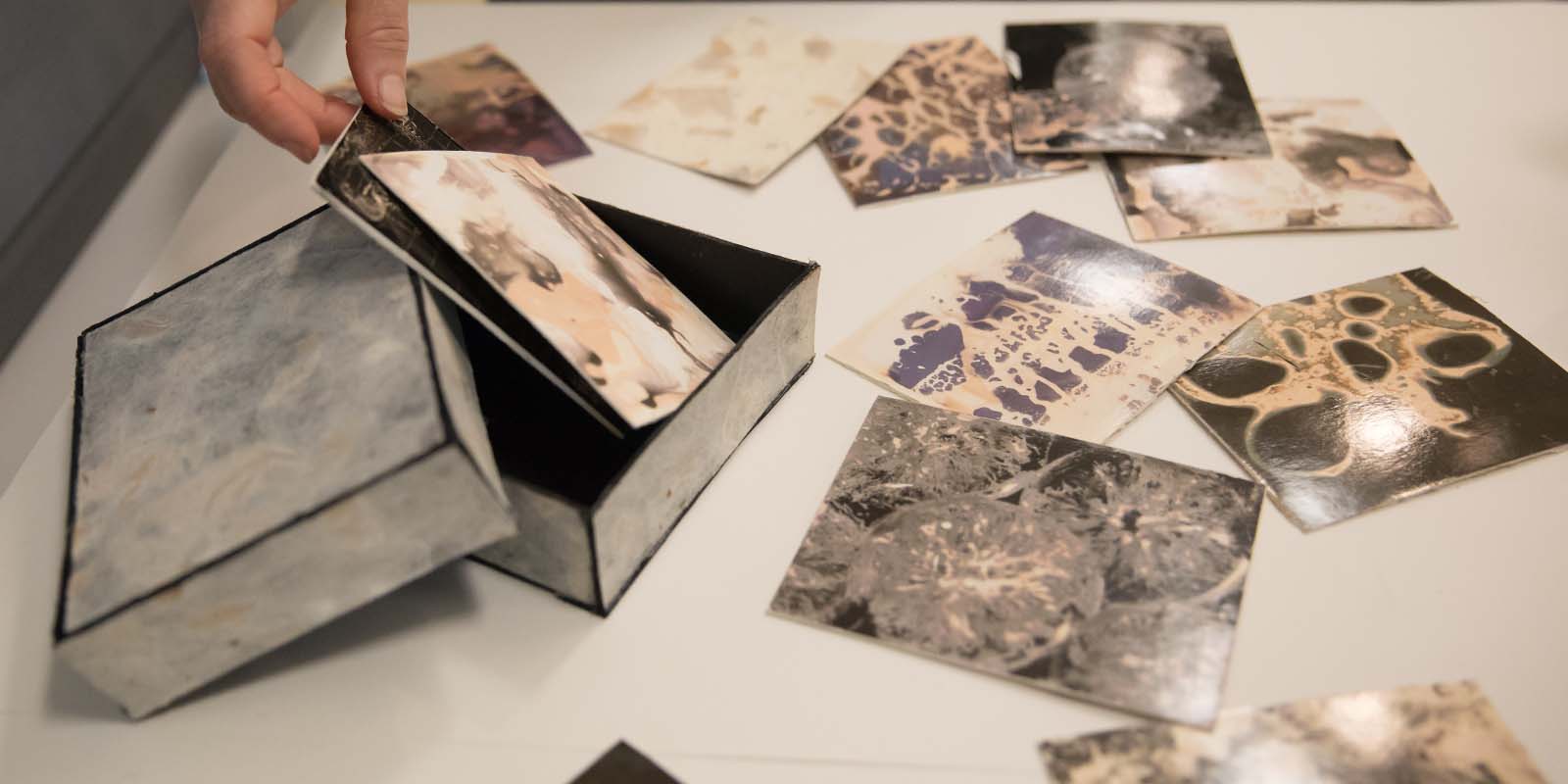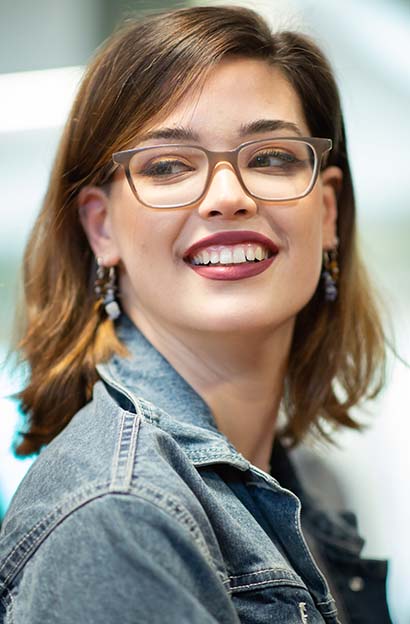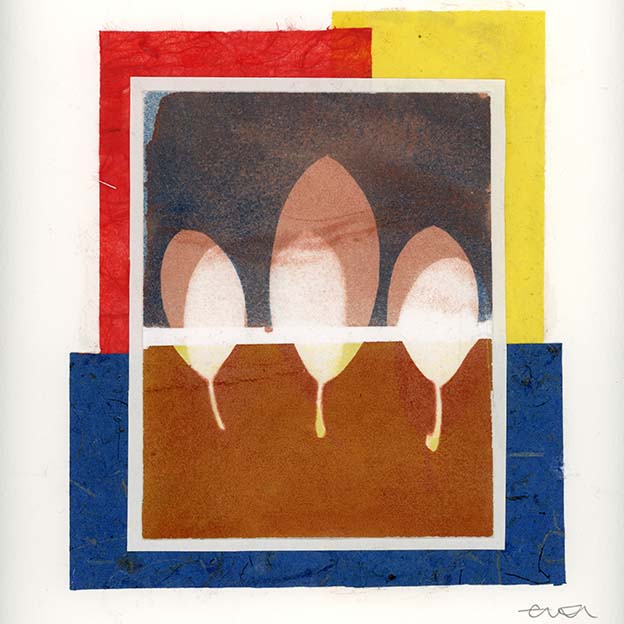
CA art show attendees were welcome to handle a variety of White’s chemigrams.
During the spring art show, students and faculty clustered around Elliot White ’19, curious about the otherworldly shapes in her images, which evoked cellular structures, crystals, and flames. For her departmental study in her final semester at CA, White had taken on a challenge: How much photography could she do without a camera?
CA photography teacher Cynthia Katz had urged her, in researching alternative photography, to take inspiration from contemporary artists’ prints. “This isn’t a popular niche right now,” White says, “so it was really an exploratory process. It was like nothing I had ever done before.”
She tried her hand at many techniques that use photographic paper but no film: lumen prints and solar printing, exposed in the sun; photograms, which make use of an enlarger; and cliché verre, the transfer of a painting or drawing from glass onto photosensitive paper. She quickly discovered her two favorites: chemigrams and gum bichromate prints.

“What I loved best was that I didn’t know how things would turn out.”
– Elliot White ’19
Both processes rest mostly on darkroom chemistry. Making chemigrams involves applying a substance to photographic paper to create a resist, then adding dye that visually tracks its dissolution in fixer and developer. White experimented with shellac, wood varnish, corn syrup, cooking oil, acidic juice, soap, wax, even sprinkles. For the second type of print, working with gum arabic and ammonium dichromate required her to take safety measures including ensuring proper ventilation and wearing gloves as well as a gas mask on loan from a science faculty member.
Katz calls White “fearless” in her approach to artmaking, but White insists that she can be overly self-critical — and that Katz’s understanding and encouragement were vital. For her, pursuing alternative photography was freeing. “What I loved best was that I didn’t know how things would turn out,” White says. “Because of that aspect of unpredictability, I could be really clear about the ways I wanted to work, but the process introduces a distance — it’s not in my control.”

The grid of 20 chemigrams that earned Elliot White ’19 the Best of Show award at a Belmont Hill School student photography show.

White’s gum bichromate prints of leaves required sun exposure and three imprints.
She has been encouraged by the reception her work has received. In March, her display of 20 chemigrams won Best in Show at a juried Belmont Hill School student show for alternative photography. “It was wonderful to be around people who understand the process,” White says. She also earned an honorable mention for her cyanotypes at the Griffin Museum of Photography’s Secondary School Exhibition, as well as Scholastic Art & Writing awards for photography.
White is now a student at Oberlin College, where she plans to double major in visual art and environmental science. She’s excited to continue working on chemigrams in the school’s alternative photography program. “I got such an intense experience being able to focus on process for the whole semester,” she says. “I really want to keep doing it.”


